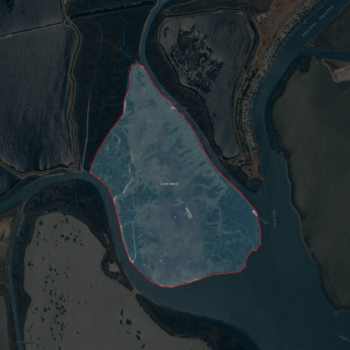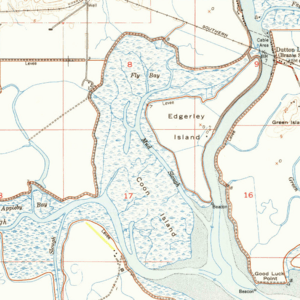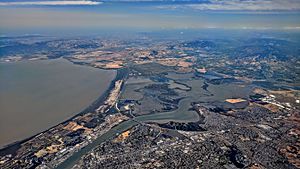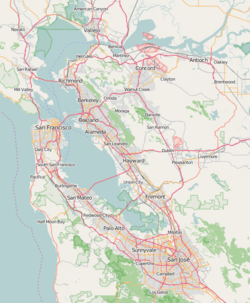Coon Island (California) facts for kids

USGS aerial imagery of Coon Island
|
|
| Geography | |
|---|---|
| Location | Northern California |
| Coordinates | 38°11′33″N 122°19′24″W / 38.19250°N 122.32333°W |
| Adjacent bodies of water | Napa River |
| Highest elevation | 3 ft (0.9 m) |
| Administration | |
|
United States
|
|
| State | |
| County | Napa |


Coon Island is a small island located in the Napa River in Northern California. It's found just before the river flows into San Pablo Bay, which is a part of the larger San Francisco Bay. This island is located in Napa County and is an important part of the Napa-Sonoma Marshes Wildlife Area. In 1981, the United States Geological Survey measured its elevation as about 3 feet (or 0.9 meters) above sea level.
Contents
What is Coon Island?
Coon Island is a natural landmass surrounded by the waters of the Napa River. It's one of many islands in this area. These islands are often formed by sediment that builds up over time in rivers and bays.
Where is Coon Island located?
The island is in Napa County, which is in the northern part of California. It's specifically found in the Napa River, which eventually connects to San Pablo Bay. San Pablo Bay is a large body of water that is connected to the famous San Francisco Bay.
How big is Coon Island?
While the exact size of Coon Island isn't given, it's considered a smaller island in the river system. Its low elevation of 3 feet means it's very close to the water level. This makes it part of a marshy environment.
Why is Coon Island important?
Coon Island is managed as part of the Napa-Sonoma Marshes Wildlife Area. This means it's a protected area. Wildlife areas are special places set aside to protect animals and their natural homes.
What is the Napa-Sonoma Marshes Wildlife Area?
This wildlife area is a large network of wetlands and marshes. It provides a safe home for many different kinds of birds, fish, and other wildlife. Protecting these areas helps keep the environment healthy.
What kind of wildlife lives there?
Marshes like those around Coon Island are vital for migratory birds. These birds stop here during their long journeys. They find food and a place to rest. Many local animals also depend on these wetlands for survival.




